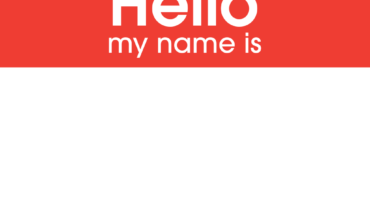Call In Now!: How Townhall.com Merged Online Community with a Talk Radio Audience
In May 2006, Salem Communications, a conservative talk-radio company, purchased Townhall.com and on July 4, 2006, launched a new web presence that combines the grassroots mediums of talk radio and the Internet.
How do you merge an existing online community with a national fan base of radio listeners? How do you grow the community and ensure that a platform exists for different voices to be heard?
Background
Townhall.com has been America’s conservative opinion editorial page for a decade, carrying over 100 different conservative columnists. Because of the wide array of conservative opinion leaders Townhall.com has carried, it has built an active, online community that covers the spectrum of conservatives.
Salem’s five nationally syndicated talk show hosts – Bill Bennett, Hugh Hewitt, Michael Medved, Dennis Prager and Mike Gallagher – reach about six or seven million people a week each on the radio. Like all the Townhall.com columnists, these personalities built a strong affinity with their listeners and readers.
Talk radio is a personal medium for its listeners, many of whom feel as though they have developed personal relationships with their favorite talk show hosts. Further, radio listeners are accustomed to participating in dialogue as it happens. They can pick up the phone and have their voices broadcast to millions of people, which is very empowering. And many of them became activists based on what they heard each day.
If this concept of finding a voice sounds familiar, consider the parallels between talk radio and the Internet. Talk radio rose to prominence in the late 1980s. At the height of the broadcast era, the ability to pick up a phone and address an audience of millions was revolutionary and powerful. Talk radio influenced politics in a major way, particularly during the 1994 election.
As the Internet grew to truly being a broad-based medium, opportunities arose for self-publishers – bloggers – to build an audience. Many people are already onto the next big wave of grassroots-opinions media: the blogosphere. Our goal is to take these millions of grass roots listeners, who were accustomed to having an opportunity to be on the radio to voice their opinions, and move them online for activism, blogging and commenting.
Step 1: Cross Promote
The talk radio hosts played a large role in driving their audiences to the Web site. For example, rather than just saying, “Call in and talk to me now,” Hugh Hewitt now adds, “If you have something to say, go to my blog and post your comments.” Even more powerful, Hugh has called on his listeners and other bloggers to create their own Townhall.com blog. People starting logging on in droves – over 1,000 blogs created in three weeks – and they brought intelligent conversation with them. Hewitt calls this the “great blog migration.”
Now, talk radio listeners have a bigger platform to voice opinion. Instead of just calling in during a pre-set, three-hour block of time, they can access the Web site and comment anytime and any way. The only requirement is having something to say in the first place.
Step 2: Don’t Forget the Individual
More importantly, talk radio listeners joined a large online community of people who share their views. Rather than going to blogspot.com and creating a single blog in a sea of other blogs from across the spectrum of interests and political views, conservatives can now go to Townhall.com and join a like-minded community of people. Our members don’t become anonymous. Each person has his or her own chair in this big town hall where nobody is more important than the individual. You get to sit right next to celebrities like Hugh Hewitt and Bill Bennett.
Step 3: Make It Easy to Have a Voice
Next, you want to get your community talking, and you want to make it easy for them to join the dialogue and buy into the community.
Townhall.com does not require an advanced degree in technology. Supporters can create their own blog in three easy steps, and they can individualize it. We have currently eight blog templates and plan on expanding that and expanding features as we continue to grow. They can create their own blog role. They can set up their own mailing lists so when they post to their blogs, their friends will know about it – and they will visit the site to post comments of their own, thereby building the community. We give people standard blog features, like the ability to turn comments on or off. We also offer a Townhall.com news feed and bibliographical information.
The results have been phenomenal. In the first few weeks of Townhall.com’s new site release, we gained over 1,000 bloggers.
Step 4: Acknowledge Effort
We want individuals in our community to know that we are listening. One of our editors regularly reads across the blog community and pulls quotes that are then featured on our homepage. Further, when people post to the blog, the most recent post automatically appears at the top of our main Townhall.com blog. They will also appear in a section of Townhall.com called “Your Opinion.”
Step 5: Give Them the Right Information
We want to know who our community members are, so we developed a personal tracking action center, similar to georgewbush.com and on gop.com. Once you register with the site, we remember you and we feed you specific information, such as who your federally- and state-elected officials are and how to contact them.
We also know what media market you’re in, and we tell you how to contact the right newspaper editors, similar to what we did on GWB and GOP. We break the media down by largest circulation and closest geographical location in order to improve your punch. We want you to reach the most effective media outlets within your community, such as the local paper that your neighbor reads because it covers your local high school sports team. And, we don’t neglect talk radio! Not only do we encourage people to call our Salem hosts, but we also provide them with the information of other talk radio shows in their media markets.
Step 6: Trust Them to Carry the Message
Our audience is influential, and we want them produce their own content because we trust them to know which topics will interest their social networks. For over a decade, hundreds of thousands of them have received emails from Townhall.com’s editor-in-chief Jonathan Garthwaite. We asked our members, “Can you write an email as well as Jonathan Garthwaite? Can you find the best content in Townhall.com? What is it that your circle of friends wants to read?” One of the actions we invite people to take is to become the author of their own “what’s new on Townhall.com” e-mail, and we give them the tools to do it.
We trust our community members to carry the conservative message. They are movement conservatives first and partisan party people second. The vast majority of our readers and listeners are thoughtful conservatives that seek to put out conservative ideas and values in order to persuade and inform people – not shout over them.
Step 7: Make Conversation a Policy
We didn’t create the community around one “big bang” feature like “Your Blog.” Instead, we invited the community to interact with us on every page. Conversation is ingrained in the DNA of the website.
Everywhere on the site is an opportunity to post a comment – whether you’re listening to audio or reading a blog post or reading a column. And there is an opportunity to forward everything to somebody else. At every turn, we encourage visitors to create their own blogs.
After all, this is the era of interaction for politics. That is what our job is: to create a platform and to create opportunities for people to voice their opinions in political debate and participate in the arena of ideas.
Step 7: Look Ahead
Remember the film The Graduate with Dustin Hoffman? At a house party early in the movie, a friend of the main character’s parents takes him to the side and gives him a piece of advice on what is the future. That one word was “plastics.” The social commentary of that scene aside, if I were to give my one word on the future today, it would be “broadband.”
Broadband is and will only continue to enable both our opinion leaders and grassroots activists to a new level of voicing their opinion by allowing video. The Internet has always been a visual medium. Because of load speed, it has been primarily a text-driven medium where people consume text, but that is changing. As download speeds increase and as the broadband infrastructure gets bigger, video will be a relevant player, and we will see more and more YouTube-style, grassroots video media. The political impact will be powerful.
Conclusion
What we are seeing today – the grassroots participation in the political debate – is not new by any means, it is how politics has always operated. For centuries prior to 1960, people knocking on neighbors doors, participating in the local town hall meeting, and dozens of other person-to-person contact efforts was how candidates touched voters and ideas were communicated. The dominance of broadcast television served to push grassroots participation out of politics. In contrast, the Internet has enabled the grassroots return. Remember the film with Dustin Hoffman? At a house party early in the movie, a friend of the main character’s parents takes him to the side and gives him a piece of advice on what is the future. That one word was “plastics.” The social commentary of that scene aside, if I were to give my one word on the future today, it would be “broadband.”
Chuck DeFeo



